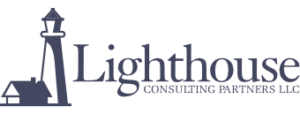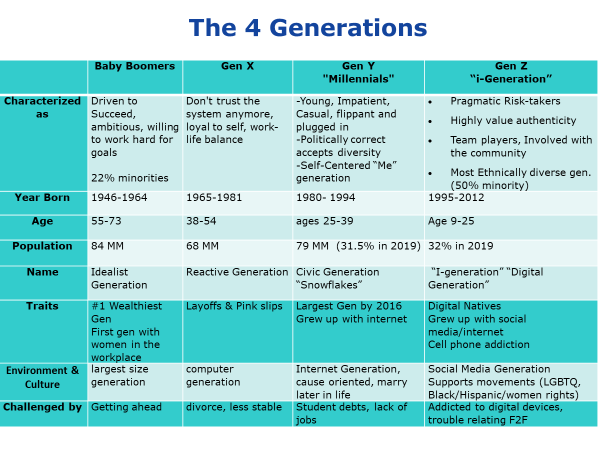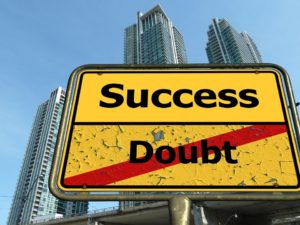Finding Inspiration During Tough Times
By Dana D. Borowka, MA & Ellen W. Borowka, MA
It’s so easy to get caught up with the news, lack of business, cash flow forecasting, etc. So, we are at a crossroads… do we sit down and ruminate about the dire situation we find ourselves in? Or do we rise higher… together to find answers and inspiration – not only to help our own families, companies, communities but also our nation, our world. This is a unique time where we all are facing the same situation… across the globe. We are all in the same boat. Though for some people… this will hit harder than for others. What do we do? Where do we go? Moving forward also means learning from others. We recently did a Covid-19 poll with our clients and we share those insights as well as some ideas for finding our way during this difficult time.
Moving Forward with Fear
Stewart Emory once said, “The absence of fear is not an option that is available to most people. People are looking for that, but that is just not an option. The difference between people who are really making it in the world and the people who are not is simple: The people who are making it in the world are making it and they have fear.” He then continues, “To go forward we need to make the growth choice. The fear choice is to retreat to comfort and avoid the fear. The growth choice is to take fear as a companion and move ahead. To have a life that is a joyful adventure, we need to be willing to take the risk. Courage is the willingness to be afraid and act anyway.” We can’t eliminate fear, but we can find ways to manage it so we can move forward on to do the things we have to do. We will address fear more later in this article.
Inspiration Leads to Finding Answers
I was raised in both Judaism and Christian Science. What a mix, huh?! Yet both go hand in hand when having to deal with difficult times and finding ideas to keep inspired. I woke up one morning during my high school days wondering what kind of job I should look for during the summer. I had been reading a bible lesson from the Christian Science Church and the topic that week included ideas about supply. One of the bible stories shared was when Jesus fed over 5,000 people. They had gone to hear him speak and share inspiring ideas. They went to get inspiration and insights about their spiritual selves and not for the sake of being fed. As a matter of fact, they had no idea that anyone would feed them… other than filling their need for ideas about God. I was so moved by this idea of gathering ideas for inspiration. The next thing that happened was that my phone rang. It was my Sunday School teacher who worked for her son in the travel industry.  They were wondering if I would be interested in being trained to be a tour manager and lead groups across the country. This turned out to be an amazing opportunity to meet a lot of people and to have fun and travel the US and Canada. It was interesting to me how this prospect came about. I was first inspired by what others did when they went to hear Jesus speak and they were fed. When I read and studied this bible passage, I too was fed by fulfilling a human need. It all happened so fast. Insight, inspiration and my summer need for a job was met.
They were wondering if I would be interested in being trained to be a tour manager and lead groups across the country. This turned out to be an amazing opportunity to meet a lot of people and to have fun and travel the US and Canada. It was interesting to me how this prospect came about. I was first inspired by what others did when they went to hear Jesus speak and they were fed. When I read and studied this bible passage, I too was fed by fulfilling a human need. It all happened so fast. Insight, inspiration and my summer need for a job was met.
Finding Connection
In today’s time, we all need to turn somewhere for inspiration and ideas whether it’s visiting with friends, support groups, round table, associations, temple or church groups, CE/Key Executive groups such as Vistage. No matter what it is, you want to be around people that can support others and to lift everyone up.
An Invitation
I’d like to invite anyone who would like to join a Wednesday evening Christian Science testimony meeting that is held via Zoom. I just started to attend them and have found so many ideas that have lifted up my spirit. These meetings consist of readings from the Bible and from the Christian Science textbook, Science and Health with Key to the Scriptures by Mary Baker Eddy who founded the religion many years ago as well as some singing and prayer. Half of the meeting is spent with the meeting participants sharing what they have learned during the week from their study of the Bible and through prayer. The ideas are practical and useful filled with lots of take-aways. The meetings are on Wednesdays 7:30 pm PT and only last an hour. If you are interested in attending, please let me know and I’ll get a zoom link to you. See further in the article for more ideas for finding peace.
Ideas for Inspiration
 Change is in the Air: It is good time to consider the following quote from Albert Einstein: “The significant problems we have today cannot be solved at the same level of thinking with which we created them.” We need to be receptive to consider how we have done things in the past and when things need to change in order to stay current. Remember the Rolodex cards? Even the good old fashioned light pole is being changed out for the more modern version that does not pollute, uses solar electricity, notifies central headquarters through a wireless device when it needs service, and is quicker and less expensive to install.
Change is in the Air: It is good time to consider the following quote from Albert Einstein: “The significant problems we have today cannot be solved at the same level of thinking with which we created them.” We need to be receptive to consider how we have done things in the past and when things need to change in order to stay current. Remember the Rolodex cards? Even the good old fashioned light pole is being changed out for the more modern version that does not pollute, uses solar electricity, notifies central headquarters through a wireless device when it needs service, and is quicker and less expensive to install.
A Strategy with Stress: We all need to deal with one key element of miscommunication… stress! If we are just reacting without a strategy or a tactic to execute then we are doing no better than running in circles. Stress or “fear” can cause us to shut down and reduce our capacity to listen. An excellent team exercise to understand how stress manifests within the work environment is to have the team members draw a picture of what each person feels they look like when under stress and write out some key attributes when staff members are under pressure and when they are feeling relaxed. Here are some questions to facilitate a discussion: How do your team members manage stress? Do your team members support each other when under pressure? What would be helpful when under stress? If you’d like us to do a lunch time remote workshop entitled, Thinking Clearly or…Is Stress Getting In Your Way? Please let us know… it’s fun, engaging with lots of take-aways.
Be Like an Ostrich: The old tale that ostriches bury their head in the sand just isn’t true. What they are really doing is resting their heads on the ground which allows them to pick up on vibrations so if a predator is near by they can protect themselves. Ostriches are actually excellent listeners! We all need to be like an ostrich and become outstanding listeners. One way to develop your listening skills is to practice active listening where you paraphrase what you think the other person is saying to you. Another thing to do – listen to your heart and soul for inspiration. You might get some great ideas from that still small voice inside.
Get to Know Who You are Dealing With: Stephen Covey said, “Seek first to understand, then to be understood.” Part of this is to try to understand the people around you. One way to do that is to identify three key traits for each of your team members. Look for commonalities and develop a strategy for how to approach each person in order to communicate in a way that is most effective for everyone.
 Create a Communications Plan: Here is a team exercise to focus on communication – briefly answer the following questions:
Create a Communications Plan: Here is a team exercise to focus on communication – briefly answer the following questions:
a. How do you listen… if at all?
b. What are three things that haven’t worked for you when communicating in the past?
c. What are three things that have worked?
d. What would you like your team members to do that they aren’t doing?
e. What are some baby steps to improve your listening and communication style?
Communication and empathy are crucial to developing a successful interpersonal relationship. The more you reach out with a plan in mind that is based on listening and openness, the more ideas will flow to you on how to best manage up and manage down.
We also have a fun workshop on this topic – let us know if you would like to know more about it.
Managing Fear
Fear or stress can feel overwhelming. So, how can we manage it better? The following are some articles on getting a handle on fear, so you can think  clearly:
clearly:
Are You Prepared to Lead the Way – or Has Fear Got Your Focus?
https://lighthouseconsulting.com/prepared-lead-or-fear-focus/
12 Tips on How to Think Clearly and Not Let Fear Control You
https://lighthouseconsulting.com/think-clearly-not-let-fear-control/
Overcoming Fear to Grow by Paul D Walker
https://lighthouseconsulting.com/overcoming-fear-to-grow/
Feeling Burdened?
https://lighthouseconsulting.com/feeling-burdened/
Deeply Prepared People Create Their Own Weather by Larry Wilson
https://lighthouseconsulting.com/deeply-prepared-people-create-weather/
Preparing Your Thought for the Day by Paul D Walker
https://lighthouseconsulting.com/preparing-your-thought-for-the-day/
Finding Peace
Tools for Difficult Times from Unity Church
https://www.unity.org/resources/tools-difficult-times
http://www.dailyword.com/
Temple Menorah
http://templemenorah.org/
Temple Beth Sholom
https://www.tbsmb.org
The People of the United Methodist Church
https://www.umc.org/en
First United Methodist Church of Santa Monica
https://santamonicaumc.org/
ST. MONICA CATHOLIC COMMUNITY
https://stmonica.net/
Daily Lift from Christian Science Church
https://www.christianscience.com/christian-healing-today/daily-lift
Headspace (meditation app) is offering, for a limited time, free subscriptions to 1) anyone who is unemployed (https://www.headspace.com/unemployed) and 2) anyone who lives in LA County (https://help.headspace.com/hc/en-us/articles/360046874573-Headspace-for-Los-Angeles-County-Residents). They also have a 2 week trial period.
Calm is also a great app – https://www.calm.com/ . They have a variety of meditations on youtube, free resources (https://blog.calm.com/blog/free-resources) and a trial period.
Lighthouse meditation workshop – We also have a remote meditation workshop. If you would like to talk further about any of these topics, please give us a call.
We hope this helps you to find some peace and support.
Covid-19 Poll – Lessons from our Clients
Finally, we recently took a Covid-19 poll to see what lessons our clients have learned during this difficult time. We would love to hear your ideas too…just email us at reception@lighthouseconsulting.com. Here are some of the responses:
1. What is the most important lesson you or your business learned?
• Our employees care more than we thought and are more loyal than we expected.
• Can’t take any time together for granted. Appreciate all the little things that make us a team.
• Importance of reserves and diversification
• Something we already knew but anchored with the pandemic is the ability to work from anywhere including home. We pivoted almost all if not all of our 4000+ employees to be able to work remotely including call centers within 2 weeks.
• Be Flexible and be ready to adjust at moment’s notice—In other words: Always have a disaster plan in mind
• I can operate much cheaper than I was operating.
• To react quickly. We got the PPP loan because we were first in line. There is no time for procrastination in today’s world.
2. What one thing do you or your business wish had been done differently?
• Laid them off immediately, subject to recall.
• Dealt with employee issues prior to COVID
• Relationship with smaller bank … Wells was not responsive at all to our needs when required.
• I wish the country had not been shut down.
• Wish I had realized how serious this was earlier in the process
• I have never been an early adopter of anything but I wish I had gotten on the Zoom train sooner.
• I wish we had been more prepared for the turnaround time between the PPP loan and furloughing people right afterwards.
3. What one thing did you or your business do that turned out to be a really smart move?
• Struggle, work hard and become debt-free over the past years.
• Managed IT and Cloud services
• Took time to develop personal relationships with customers. Salesmen instructed to avoid discussing business and simply get to know customer on deeper level.
• We kept masks around since day 1 so that when customers come in we can put them on and make the customer feel better.
• Learned to use ZOOM—wish I had stock in them.
• Furloughed staff quickly and then was able to call back for a month with PPP
• Keep marketing through the troughs. There are still plenty of prospects buying.
• We had the right technology to go virtual very quickly. We also added some new things into our days to keep us connected and engaged. For instance, we started a book club and its been a smashing success. We also created a Weekly Work Log so that we could see what people were doing at home and find out what successes they had and what they were struggling with.
Permission is needed from Lighthouse Consulting Services, LLC to reproduce any portion provided in this article. © 2020 This information contained in this article is not meant to be a substitute for professional counseling.
Dana Borowka, MA, CEO and Ellen Borowka, MA, Senior Analyst of Lighthouse Consulting Services, LLC with their organization constantly remain focused on their mission statement – “To bring effective insight to your business”. They do this through the use of in-depth work style assessments to raise the hiring bar so companies select the right people to reduce hiring and management errors. LCS can test in 19 different languages, provide domestic and international interpersonal coaching and offer a variety of workshops – team building, interpersonal communication and stress management. They have over 25 years of business and human behavioral consulting experience. They are nationally renowned speakers and radio personalities on this topic. They are the authors of the books, “Cracking the Personality Code” , “Cracking the Business Code” and “Cracking the High-Performance Team Code”. To order the books, please visit www.lighthouseconsulting.com.
If you would like additional information on this topic or others, please contact your Human Resources department or Lighthouse Consulting Services LLC, Santa Monica, CA, (310) 453-6556, extension 403, dana@lighthouseconsulting.com & our website: www.lighthouseconsulting.com.
Our Sino-Am Leadership Program helps executives excel when stationed outside their home country. American managers in Asia and Asian managers in America face considerable business, personal, and leadership challenges because of the cultural differences. This unique program provides personal, one-on-one coaching. For more information visit, https://lighthouseconsulting.com/performance-management/talent-development/sino-american-management-style/.
We also have an affiliate in the UK who covers all of Europe so we are now a true multi-national company that can support our clients globally.

 Well, it’s not that as intelligent business people, we can’t apply a set of rules to a situation and determine the right answer. If there were a standard, we’d all probably be able to figure it out and agree. But that’s the problem, there simply isn’t one, easy set of rules – until maybe now, with the increasing use across the country of ABC tests to make the determination. Hawaii, for example, has long used the ABC test for determining employee status ‐ as do 16 other states. And now California has jumped on the bandwagon after their state supreme court decided earlier this year that they could not be outdone by Massachusetts who had been known for having the most stringent test in the country! And while these ABC tests aren’t necessarily good news for employers, they are at least typically more clear than the tests used in other jurisdictions and by other agencies.
Well, it’s not that as intelligent business people, we can’t apply a set of rules to a situation and determine the right answer. If there were a standard, we’d all probably be able to figure it out and agree. But that’s the problem, there simply isn’t one, easy set of rules – until maybe now, with the increasing use across the country of ABC tests to make the determination. Hawaii, for example, has long used the ABC test for determining employee status ‐ as do 16 other states. And now California has jumped on the bandwagon after their state supreme court decided earlier this year that they could not be outdone by Massachusetts who had been known for having the most stringent test in the country! And while these ABC tests aren’t necessarily good news for employers, they are at least typically more clear than the tests used in other jurisdictions and by other agencies.
 This is an area to keep your eye on. It is entirely possible that other agencies will also adopt the ABC standard. Recently, Senator Bernie Sanders introduced a bill that would incorporate California’s new version of the ABC test into the federal rules for determining independent contractor status under the National Labor Relations Act (NLRA). We are clearly experiencing a trend.
This is an area to keep your eye on. It is entirely possible that other agencies will also adopt the ABC standard. Recently, Senator Bernie Sanders introduced a bill that would incorporate California’s new version of the ABC test into the federal rules for determining independent contractor status under the National Labor Relations Act (NLRA). We are clearly experiencing a trend.
 “Know how stressful or intimidating panel interviews can be,” says Crabtree. “Make it fun and interactive. The attitude should be: ‘Let’s have a conversation and get to know each other. Let’s see how this dynamic will work and if you have the skills to do the job successfully.’”
“Know how stressful or intimidating panel interviews can be,” says Crabtree. “Make it fun and interactive. The attitude should be: ‘Let’s have a conversation and get to know each other. Let’s see how this dynamic will work and if you have the skills to do the job successfully.’”
 Lighthouse can help guide your organization in designing and implementing a remote work force platform with the help of our practice specialist through our full service business consulting division For more information please contact
Lighthouse can help guide your organization in designing and implementing a remote work force platform with the help of our practice specialist through our full service business consulting division For more information please contact  Allowing employees to work from remote locations means a company can expand its talent pool from beyond its local geography. According to university/industry research viewed by Lighthouse Consulting Services, LLC, if the right person is selected his or her work production has the potential to increase by 30% to 300%. Obviously, hiring better workers that work remotely can result in increased productivity and client satisfaction.
Allowing employees to work from remote locations means a company can expand its talent pool from beyond its local geography. According to university/industry research viewed by Lighthouse Consulting Services, LLC, if the right person is selected his or her work production has the potential to increase by 30% to 300%. Obviously, hiring better workers that work remotely can result in increased productivity and client satisfaction. One company required that all meetings be done via video conferencing including 1-to-1 meetings. Some staff members may be resistant to being on the camera though making this mandatory to participating in the remote worker program can help emphasize the importance of this connection. Reminding the employee that you see more of them in person than when they are on camera may help ease any anxiety.
One company required that all meetings be done via video conferencing including 1-to-1 meetings. Some staff members may be resistant to being on the camera though making this mandatory to participating in the remote worker program can help emphasize the importance of this connection. Reminding the employee that you see more of them in person than when they are on camera may help ease any anxiety.



 So, there you are! 10 quick strategies for survival in the new decade. Good luck and let me know your success with these tips!
So, there you are! 10 quick strategies for survival in the new decade. Good luck and let me know your success with these tips! spark dies, and an opportunity is missed. Being in “the zone,” simply described, is one insight after another acted upon in the flow of cause and effect. It is like dancing in perfect harmony with a band. Dancing to the rhythm and flow of the moment brings out our soul’s calling and our natural genius, both of which have yearned to be expressed most of our lives.
spark dies, and an opportunity is missed. Being in “the zone,” simply described, is one insight after another acted upon in the flow of cause and effect. It is like dancing in perfect harmony with a band. Dancing to the rhythm and flow of the moment brings out our soul’s calling and our natural genius, both of which have yearned to be expressed most of our lives.

 On the upside, the testing procedure that a company follows can send a message to candidates that the company leaders are serious about who they hire. Successful people want to work with other successful people. In many cases, the candidate may accept a position from the organization they perceive to be more thoughtful during the hiring process.
On the upside, the testing procedure that a company follows can send a message to candidates that the company leaders are serious about who they hire. Successful people want to work with other successful people. In many cases, the candidate may accept a position from the organization they perceive to be more thoughtful during the hiring process.

 What is the payoff to a manager for developing connected relationships with employees using personality assessments? Here are three good benefits. First, it enables the manager to better anticipate what roadblocks might occur with a worker, and what to try to reduce this resistance. Second, understanding where employees are coming from will help you plan out how much participation you need from them, and will give some clues as to how change should be communicated to them. Third, building connected relationships builds commitment and loyalty.
What is the payoff to a manager for developing connected relationships with employees using personality assessments? Here are three good benefits. First, it enables the manager to better anticipate what roadblocks might occur with a worker, and what to try to reduce this resistance. Second, understanding where employees are coming from will help you plan out how much participation you need from them, and will give some clues as to how change should be communicated to them. Third, building connected relationships builds commitment and loyalty. So, how do you determine if harmony and collaboration truly exist within your team? More importantly – and perhaps more terrifying – what if they don’t exist, and you are part of the reason? You do this by listening to your colleagues and direct reports, with a commitment to change if necessary. You run through the gauntlet of the infamous 360 assessment.
So, how do you determine if harmony and collaboration truly exist within your team? More importantly – and perhaps more terrifying – what if they don’t exist, and you are part of the reason? You do this by listening to your colleagues and direct reports, with a commitment to change if necessary. You run through the gauntlet of the infamous 360 assessment. Knowing The Difference
Knowing The Difference

